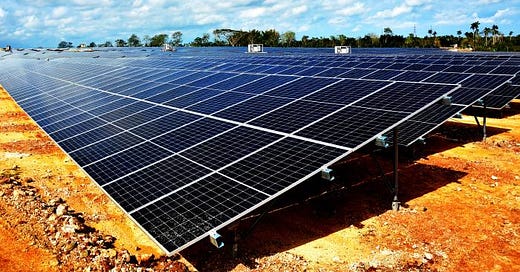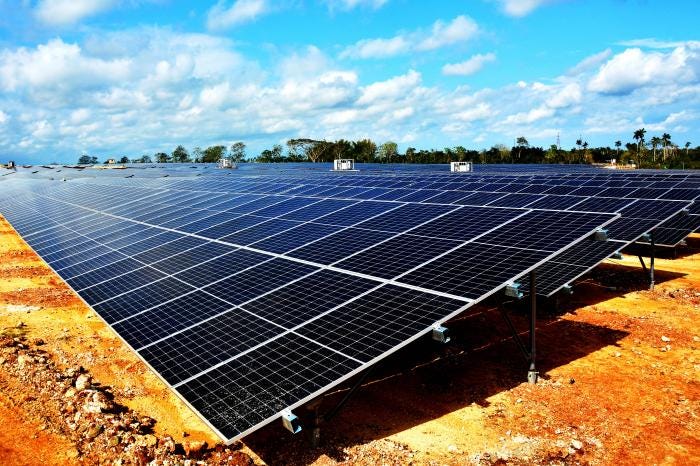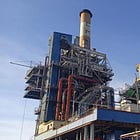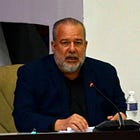In an extensive interview with Dilbert Reyes Rodríguez of Granma, Vicente de la O Levy, Cuban Minister of Energy and Mines, explained the sources of the current energy crisis in Cuba as well as the Cuban comprehensive plan for the full recovery of its National Electrical System. Granma is the principal daily newspaper in Cuba, owned and managed by the Central Committee of the Communist Party of Cuba.
As a legacy of both the neocolonial relation with the United States as well as the cooperative and mutually beneficial relation with the Soviet Union, Cuba has four oil refineries that produce diesel, gasoline, liquid gas, and aircraft turbo fuel. However, the crude oil for these refineries must be imported, because Cuban crude does not have the qualities that would enable its use in the production of such products. Cuban crude oil is used in the thermoelectric plants, which were redesigned for this type of fuel following the collapse of the Soviet Union. In the past, Cuban crude was used to manufacture motor oil and similar products.
The current energy crisis in Cuba, de la O Levy explained, is rooted in the disintegration of the Soviet Union. In the era of cooperation between Cuba and the Soviet Union, the Cuban thermoelectric plants were designed to use high quality fuel that came primarily from the Soviet Union. When the Soviet Union collapsed, the high-quality fuel supply of twelve million tons disappeared overnight. So Cuba was forced to undertake a reconversion of its thermoelectric plants, utilizing a unique innovation that was entirely Cuban, enabling the thermoelectric plants to use low-quality Cuban crude oil. In this process, the Cuban crude is not refined; it is burned directly in the thermoelectric plants.
Said innovation saved the Cuban electrical generating system after the collapse of the Soviet Union, but at a cost, in that it greatly reduced the time between periodic stops for maintenance of the thermoelectric plants. Cuban crude is a heavy fuel oil with a very high content of Sulphur and Vanadium, which generate sulfuric acid when burned, thereby accelerating corrosion.
In the first decade of the twenty-first century, the Minister explained, Cuba launched an “energetic revolution.” Between one and two billion dollars per year were invested in the project. During a period of two years, Cuba installed 202 sites of energy distribution, supplementing large thermoelectric plants, thus creating a system of decentralized energy distribution. Cuba invested also in the development of more energy-efficient domestic products, including refrigerators and lightbulbs, which contributed to the reduction of the demand for electricity. But today, Cuba is able to invest no more than 250 to 350 million dollars annually in the electrical system, as a result of insufficient income, a consequence of the intensification of the U.S. blockade that was initiated during the first Trump administration.
In recent years, Cuba has faced the problem of the aging of the thermoelectric plants. The plant in Mariel, for example, was inaugurated in 1975, and the newest of the thermoelectric plants already are more than twenty-five years old. One can keep a plant running for 100 or 200 years, the Minister noted, if it has the required maintenance, with all the necessary equipment, supplies, and resources. But if the system is not maintained adequately for a period of six or seven years, there begins a progressive deterioration of the system, and breakdowns occur.
At the same time, Minister de la O explained, the capacity to produce Cuban crude oil also has been declining, a consequence of the same factors that were affecting the generation of electricity: lack of resources, insufficient replacement parts, and a deterioration of the system of production. To drill an oil well is an investment, but then the well must be maintained with resources. The lack of resources was forcing the continuous closing of wells, because of the lack of resources to maintain them as active wells.
Still another factor is that Cuba has few oil pipelines. The transportation of imported crude from ports to national refineries is by pipeline, and the thermoelectric plant in Matanzas is supplied by pipeline. But most of the thermoelectric plants have to be supplied by road transport with oil trucks. When there is not sufficient diesel for transportation by road, bottlenecks in the distribution of Cuban crude occur, which also places limits on production. This has meant that Cuba has not been in a position to invest in new wells or make new seismic studies.
With the production of national crude oil in a continuous situation of decline and deterioration, de la O Levy noted, the leadership was able to imagine a situation in which Cuba was not going to have any Cuban crude for the thermoelectric plants, which would have meant paying the high price of imported fuel, with negative consequences for the production and importation of food.
So, the Party and the government undertook a comprehensive analysis, with the participation of specialists in Cuban universities and research centers. It was seen that Cuba has always been, even in the best of times, overly dependent on the importation of fuel, necessary to sustain the economy and to generate electricity. The payments for imported fuel have been more than the payments for imported foods, medicines, or anything else, the Minister noted. More than half of the imported fuel goes to the generation of electricity, more than agriculture, water pumps, harvest, transportation, and the network of the domestic economy combined.
The leadership, therefore, arrived to the conclusion that Cuba must attain independence from the importation of fuel. It was decided, accordingly, to expand the use of photovoltaic panels and the use of renewable resources of energy. The highest priority is given to photovoltaic panels over other forms of renewable energy, because investments are less costly and can be made more rapidly, and because the panels can be constructed throughout the fifteen provinces of the country, with the investments organized in each territory.
This year, forty-six solar parks are being installed, which will produce 1,000 megawatts of energy daily, generating savings in fuel, which can be directed toward the generation of energy during the night. The solar parks include batteries, which can respond rapidly, in milliseconds, to deficits provoked by the passing of clouds; the batteries are charged with photovoltaic solar energy in four or five hours. Ninety-two photovoltaic parks will be installed in the program, each of which will generate from five to twenty-one megawatts daily, depending on its size. The People’s Republic of China has donated the materials for the installation of the photovoltaic parks.
The photovoltaic parks are part of a comprehensive plan, which includes extensive repair and modernization of some of the thermoelectric plants, which continue being the base of the system. This process of modernization and repair is being carried out with the support of Russia.
Cuba also plans the recovery of the system of national crude oil production. Currently, Cuban wells produce only 6% of the crude oil that is found in the subsoil. Various petroleum deposits have been identified, pointing to the possibility of increasing that figure to 10% or 11%. In addition, Cuba is providing incentives for prospecting for crude oil of higher quality, including exploration of offshore deposits. An exploration campaign will be undertaken this year, which could lead to the incorporation of three to five wells.
Final considerations
I have in previous commentaries stressed that the intensification of the U.S. blockade, initiated by the first Trump administration and continuing to the present, is the primary cause of the current economic crisis in Cuba and the instability of its National Electrical System.
In an interview with Ignacio Ramonet on May 14, 2024, Cuban President Miguel Díaz-Canel explains characteristics and the impact of the intensified blockade, launched by the first Trump administration in the second half of 2019.
Cuba confronts the blockade with a scientifically based national economic plan that responds to the intensification of the U.S. blockade. It stresses increasing national production through creative production at the local level, with high levels of participation by the people. And it includes reducing the state deficit as well as combatting abusive prices and corruption through preventive and punitive measures.
Cuba confronts the blockade with unity. The economic crisis has not generated a political crisis. In this sense, the U.S. economic blockade has failed to achieve its primary objective. The blockade has had some ideological payoff for the USA, in that, by limiting the capacity of Cuba to develop, it gives credence to the ideological claim that socialism does not work. On the other hand, there is a cost, in that the blockade has greatly damaged U.S. international prestige; and it denies to the United States what ought to be a mutually beneficial trading relation.
A free subscription option is available, with capacity to read, send, and share all posts. A paid subscription ($5 per month or $40 per year) enables you to make comments and to support the costs of the column; paid subscribers also receive a free PDF copy of my book on Cuba and the world-system. Ten percent of income generated through subscriptions to the column is donated to the Cuban Society for Philosophical Investigations.








